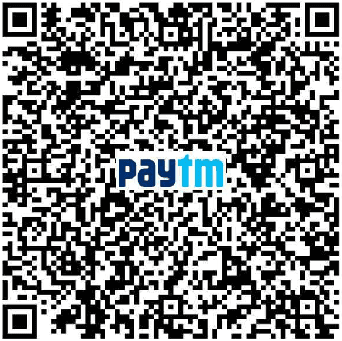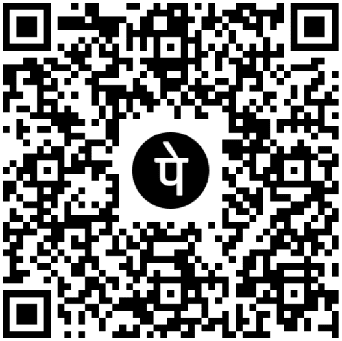Why These Hidden Digital Tools Are Making Experts More Productive in 2025
Digital tools have transformed our work lives at a staggering pace. According to a Gartner survey, the average desk worker now uses 11 different digital tools daily—a figure that has increased by 83% since 2019. This dramatic shift shows just how dependent we've become on technology to stay productive.
We've witnessed firsthand how these digital tools and technologies allow us to work smarter rather than harder. From Duolingo's language learning platform that gained significant traction during the pandemic to WeTransfer's ability to share files up to 2GB for free, the right digital tool can eliminate friction from our workflows. Additionally, solutions like Trello have revolutionized project management since 2011, while Citymapper provides real-time transportation updates for efficient travel planning. Even password management has been simplified with LastPass, letting us focus on work instead of remembering dozens of login credentials.
In this article, we'll explore 10 hidden productivity champions that experts are using to maximize their efficiency in 2025. Whether you're looking to organize projects, improve your writing, or secure your digital life, these tools might be the missing piece in your productivity puzzle.
Cram – A Smarter Way to Use Flashcards
Flashcards remain one of the most effective study methods, but traditional paper cards come with obvious limitations. Enter Cram, a digital flashcard tool that modernizes this time-tested learning technique for today's students and professionals.
Remembering information becomes remarkably easier with Cram's online platform. The service hosts an impressive library of over 176 million user-generated flashcards, covering virtually every subject imaginable. From airport codes to advanced pastry terminology, chances are someone has already created the exact study deck you need.
Creating your own custom flashcards is straightforward and efficient. Unlike physical cards that get lost or damaged, these digital versions stay accessible wherever you go. Furthermore, Cram allows you to share your flashcard sets with classmates or colleagues, making collaborative studying effortless.
One of Cram's standout features is its mobility. The companion app, available for Android, iPhone, and Windows devices, lets you study during commutes or any spare moment. This flexibility transforms otherwise wasted time into productive learning sessions.
The platform offers multiple study modes to enhance retention:
- Traditional card-by-card review
- Self-testing with automatic scoring
- Four testing formats including matching, written, multiple choice, and true/false
Perhaps most impressive is how Cram addresses the limitations of cramming itself. While last-minute studying might help with short-term recall, research shows spaced-out study sessions are more effective for 90% of learners. Cram's digital format encourages this better practice by making flashcards accessible anytime, anywhere.
The basic version is free, though premium subscribers gain additional formatting options and organizational tools. The premium version removes ads and allows for customizable formatting of flashcards.
This digital tool represents a perfect example of how technology can enhance traditional study methods rather than replace them. By combining the proven effectiveness of flashcards with the convenience of digital access, Cram helps transform how we learn and retain information in our increasingly knowledge-driven world.
OneNote – The Ultimate Note-Taking Companion
Capturing ideas effectively requires more than just jotting things down—it demands organization, accessibility, and flexibility. Microsoft OneNote delivers on all fronts as a digital notebook that organizes your thoughts, research, and projects in one centralized location.
I've found OneNote's organizational structure particularly intuitive. Unlike linear note-taking apps, OneNote mimics physical notebooks with a three-tier hierarchy:
- Notebooks function like binders for broad topics or projects
- Sections act as dividers to categorize related content
- Pages provide the canvas where you capture your actual notes
Moreover, OneNote offers unparalleled flexibility in how you arrange information. Each page functions as a canvas where you can add text, images, audio recordings, and even hand-drawn sketches anywhere you want. This freeform approach adapts to your specific note-taking style, whether you prefer structured outlines or visual mind maps.
Perhaps OneNote's greatest strength lies in its cross-device syncing through OneDrive. Your notebooks automatically sync across all devices, ensuring access to your notes whether you're on your laptop at work, using your tablet in a meeting, or checking your phone during a commute. Essentially, you're never without your important information.
Notably, OneNote excels as a collaborative tool. You can share entire notebooks with colleagues through Microsoft Teams, making it ideal for group projects and shared planning. Multiple users can work simultaneously on the same notebook, enhancing team productivity.
Despite its robust feature set, OneNote remains free with 5GB of OneDrive storage included. For power users, upgrading to 100GB costs just $1.99 monthly.
Ultimately, OneNote stands out among digital tools for its versatility. From simple note capture to complex project planning, it adapts to virtually any workflow. The platform's ability to combine text, drawings, images, and audio creates a comprehensive environment for capturing and organizing information exactly how your brain works.
Grammarly – Your Personal Writing Assistant
Clear, error-free writing has become non-negotiable in professional settings. Grammarly serves as an AI-powered writing assistant that goes far beyond catching simple typos, helping users craft polished, effective communications wherever they type.
What makes this digital tool truly versatile is its expansive reach—Grammarly functions across 500,000+ websites, apps, and browsers on both desktop and mobile devices. Consequently, whether you're drafting an important email, creating content for social media, or finishing a research paper, your writing assistant travels with you.
The free version offers substantial value, catching spelling mistakes, grammatical errors, and punctuation issues while also helping with conciseness and providing tone detection. Users receive 100 monthly uses of its generative AI features and automatic citation generation when visiting compatible sources.
However, serious writers often upgrade to Grammarly Premium for more comprehensive assistance. The premium version provides advanced tone and clarity suggestions, plagiarism detection, and up to 2,000 monthly uses of generative AI features. Premium pricing starts at $12 monthly with annual billing.
One of Grammarly's most impressive capabilities is its tone analysis. The system identifies your writing's tone by analyzing word choice, phrasing, punctuation, and even capitalization. This feature proves invaluable when trying to strike the right balance between confidence and politeness in professional communications.
Besides correcting errors, Grammarly functions as a learning tool. Each suggestion comes with a clear explanation of the underlying rule, helping users improve their writing skills over time. The platform also offers vocabulary enhancement, suggesting vivid synonyms for bland words and helping eliminate repetition.
Indeed, what distinguishes this digital tool from basic spell-checkers is its ability to enhance the substance of your writing—improving clarity, refining tone, and strengthening overall impact so your message always hits its mark.
Duolingo – Learn Languages on the Go
Language barriers dissolve with the right tools at hand. Duolingo stands out as a digital powerhouse that transforms language learning from a tedious chore into an addictive daily habit. With over 500 million users worldwide and courses teaching more than 39 languages, this platform has redefined how we approach multilingual skills.
What makes Duolingo exceptionally effective is its science-backed, gamified approach. The app cleverly incorporates game elements that keep users engaged and motivated. You earn experience points (XP) for completing lessons, collect badges for achievements, and maintain "streaks" for consecutive days of practice. These gamification elements boost user engagement by an impressive 100-150% compared to traditional learning approaches.
The bite-sized lessons fit perfectly into busy schedules, allowing you to practice anywhere. Each unit focuses on specific communication goals, gradually building your vocabulary and grammar through speaking, writing, reading, and listening exercises. For those looking to improve specific skills, Duolingo offers specialized features like Stories for reading comprehension and DuoRadio for podcast-style listening practice.
In 2025, Duolingo's newest feature, Adventures, has taken language immersion to another level. These video game-like experiences allow you to "play" as Duolingo characters in real-life scenarios like ordering coffee or grocery shopping. Instead of traditional corrections, Adventures uses "immersive feedback" that redirects you naturally when you make mistakes—mimicking real-world interactions.
The results speak for themselves: 9 out of 10 learners report feeling more confident speaking after just one month. Even more impressive, studies show that completing five sections of Duolingo provides language skills equivalent to five semesters of university instruction. After approximately 27 hours of study, users significantly improve in all receptive and productive language abilities.
As a productivity-enhancing digital tool, Duolingo transforms otherwise wasted moments into valuable learning opportunities. The platform's streak feature proves particularly powerful in building the consistency that's critical for language acquisition.
WeTransfer – Easy File Sharing for Large Projects
When projects involve massive files, traditional email attachments simply won't suffice. WeTransfer steps in as a straightforward digital tool that removes the friction from large file sharing, making it an essential resource for creatives and professionals alike.
The beauty of WeTransfer lies in its simplicity. Users can send files up to 2GB completely free without even creating an account. This no-registration approach makes it particularly valuable for quick exchanges with clients or colleagues who may be less tech-savvy. Whenever you need to share high-resolution videos, RAW image files, or large presentations, the process is refreshingly uncomplicated.
Uploading couldn't be more straightforward—just drag and drop files or folders onto the transfer page. Subsequently, you can share the generated download link via any communication channel you prefer, from email to text message. The recipient then downloads directly from that link, eliminating the confusion of attachment size limits or bounced emails.
For Mac users, the dedicated app elevates convenience further. You can initiate transfers directly from your desktop by dropping files onto the app icon. Once the upload completes, the app turns entirely blue, indicating your download link is ready to copy and share.
Nonetheless, free users should note that links expire after 7 days, and in December 2024, WeTransfer restructured its plans to include limits of 10 transfers or 3GB over a 30-day period. These limits operate on a rolling basis, meaning new transfers become available as older ones age out of the 30-day window.
Power users can upgrade to paid plans for substantially increased capabilities. The Pro version allows transfers up to 200GB in one go—perfect for sending extensive video projects, architectural renderings, or comprehensive marketing materials.
In essence, this digital tool has become indispensable for content creators and media professionals who regularly need to share substantial files. Its combination of generous free limits, intuitive interface, and robust paid options makes file sharing one less technical headache in your daily workflow.









0 Comments